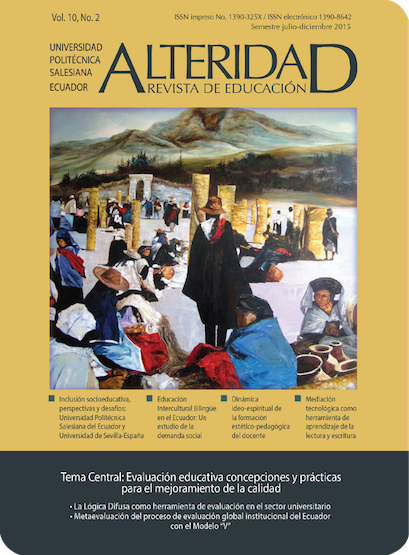Technological mediation as a learning tool for writing and reading
Main Article Content
Abstract
This article disclosed the progress a technological mediation has built to the adquisition, use and development of reading and writing from Cognitive Affective Method for Learning -MACPA-. A development like the one being proposed, is an option for children and young people to, activate, promote, develop and / or enhance the learning of reading and writing. Likewise, it is an option to consider the results achieved in the PISA test and case reports, done by teachers by teachers, showing that that elementary students do not perform production of texts so spontaneous or directed; and they fail to make progress in reading comprehension levels. Given this context, the partial results achieved in the second phase of the research aims to implement a technology platform based mediation MACPA as an educational resource to enhance the processes of reading and writing among students from first to fourth grades of primary education. Accordingly, through Article basis be found in a software for reading and writing that takes into account the particularities of learning of students with intellectual disabilities, learning disabilities in students who have not evidenced difficulties in academic learning processes, though they require a new method to accelerate learning.
Article Details
Section
Special Contributions
Authorship: The list of authors signing must include only those people who have contributed intellectually to the development of the work. Collaboration in the collection of data is not, by itself, a sufficient criterion of authorship. "Alteridad" declines any responsibility for possible conflicts arising from the authorship of the works that are published.
Copyright: The Salesian Polytechnic University preserves the copyrights of the published articles, and favors and allows their reuse under the Creative Commons Attribution-NonCommercial-ShareAlike 3.0 Ecuador license. They may be copied, used, disseminated, transmitted and publicly displayed, provided that: i) the authorship and the original source of their publication (journal, editorial and work URL) are cited; (Ii) are not used for commercial purposes; Iii) mention the existence and specifications of this license.
Copyright: The Salesian Polytechnic University preserves the copyrights of the published articles, and favors and allows their reuse under the Creative Commons Attribution-NonCommercial-ShareAlike 3.0 Ecuador license. They may be copied, used, disseminated, transmitted and publicly displayed, provided that: i) the authorship and the original source of their publication (journal, editorial and work URL) are cited; (Ii) are not used for commercial purposes; Iii) mention the existence and specifications of this license.

